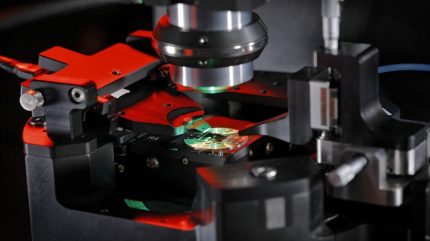
Fleet Space, an Australian space exploration company, has announced partnerships with mDetect, Nomad Atomics and DeteQt to advance next-generation mineral exploration technology.
The company is seeking to enhance the global mining industry’s technological capabilities, particularly in quantum sensors, to support AI-driven mineral exploration through these partnerships.

Discover B2B Marketing That Performs
Combine business intelligence and editorial excellence to reach engaged professionals across 36 leading media platforms.
Fleet Space will leverage mDetect’s muon tomography, which offers high-resolution subsurface 3D density maps, aiding mineral exploration and drill targeting.
Nomad Atomics is developing quantum gravimeters and accelerometers for ultra-fine resolution gravity data, enhancing predictive AI outputs, which will advance data-driven exploration strategies and improve the predictive capabilities of Fleet Space’s AI.
Additionally, DeteQt’s ‘diamond-on-chip’ quantum magnetometers detect magnetic fields with high precision, supporting the creation of 3D subsurface conductivity models with minimal ground disturbance.
Incorporated into Fleet Space’s low-impact, real-time magnetotelluric solution, these compact devices have the potential to facilitate the creation of 3D subsurface conductivity models while causing minimal ground disturbance and requiring little excavation.

US Tariffs are shifting - will you react or anticipate?
Don’t let policy changes catch you off guard. Stay proactive with real-time data and expert analysis.
By GlobalDataThese partnerships will bolster the processing and acquisition speed of geophysical datasets and pave the way for muon tomography to improve geological predictions made by modern AI systems.
Fleet Space chief scientist Gerrit Olivier said: “By partnering with global leaders in quantum gravimetry and magnetometry, we are bringing laboratory-grade precision into a hand-held package. These sensors deliver extreme precision and stability in the field, letting crews collect higher-fidelity gravity and magnetic data with fewer stations, lighter logistics and far simpler CONOPS [concept of operations].
“When we fuse these quantum measurements with passive muon tomography, seismic imaging and conventional gravity data inside our joint-inversion framework, we obtain an unprecedented 3D picture of the subsurface, from regional reconnaissance right down to drill-ready targets.”
As part of its ExoSphere platform expansion, Fleet Space is working with start-ups and academic institutions including Stanford’s Mineral-X and MIT’s Space Exploration Initiative to increase efficiency and precision in the mineral value chain on Earth and beyond.
The demand for minerals, driven by the renewable energy transition and advanced technology manufacturing, has led to a reconfiguration of the global mining industry’s exploration toolkit.
Companies are now incorporating satellites, real-time multi-physics ground sensors and AI to enable non-invasive, data-driven exploration.
Utilising the ExoSphere platform, industry giants such as Rio Tinto, Barrick, BHP and Gold Fields have accelerated exploration and gained valuable geological insights.
Saudi state-owned mining company Maaden is also deploying ExoSphere across 12,000km² of the Arabian Shield, integrating 3D subsurface imaging with AI-enabled drill targeting to develop Saudi Arabia’s mineral assets, valued at $2.5trn (SR9.38trn).
Following the acquisition of HiSeis and a $100m (A$153.87m) Series D funding round, Fleet Space is also planning a lunar deployment of its ExoSphere technology, SPIDER, in late 2026 to further lunar subsurface research.





